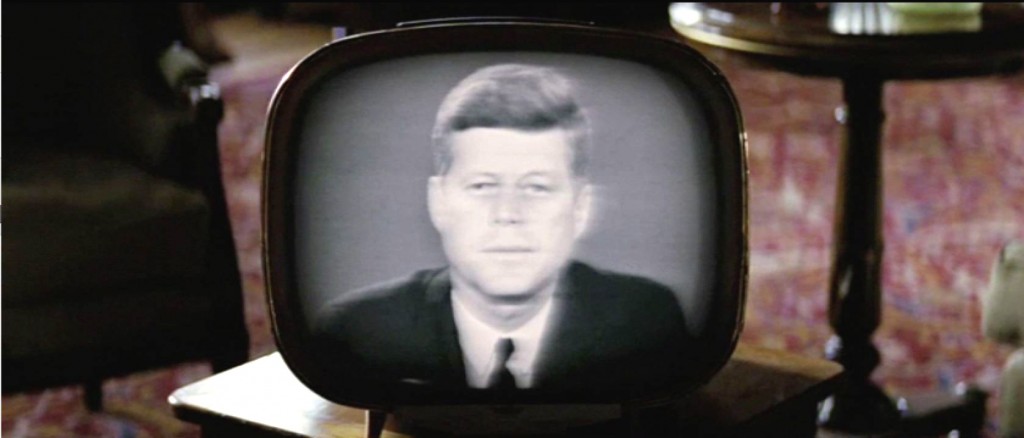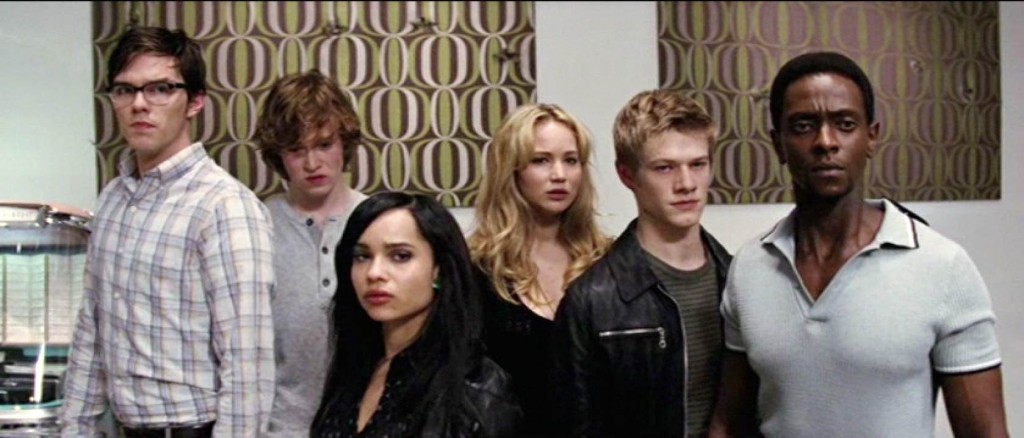X-Men: First Class part 10
As the fantastic merges with the historic, no less a personage than John F. Kennedy is brought in lend weight to plot of X:Men: First Class. The footage is real, as is the footage that follows, of stores being sold out of canned goods and people stockpiling fallout shelters. Fallout shelters were big news at the time. The Twilight Zone had featured an episode about a fallout shelter a year earlier than the Cuban Missile Crisis; Bob Dylan, in February 1962, recorded a song about them, “Let Me Die in My Footsteps.” What seems quaint now, the idea that one could run and hide from a nuclear war, was, unbelievably, very real and present to the general populace. I myself was a mere tadpole in October of 1962, but my parents assured me, yes, for a few days, you pretty much just didn’t know if the world was suddenly going to end. In its way, it’s a comforting thought, that this level of madness was brought on by fantastical mutants bent on world domination, as the reality of the situation is too mind-bending to absorb.
In practical terms for the adventure narrative of First Class, the Cuban Missile Crisis is a clue for our protagonists to find Shaw. Remember, “to save the world” is not their goal, only “to find Shaw.” Xavier to stop him (to make the world a better place), Erik for his private, personal revenge. Xavier is high-minded, Erik is low-minded. Xavier may be who we want to be, but Erik is who we are.
X-Men: First Class part 9
While Erik and Xavier, er, “have their way” with Emma in Russia, Shaw and his team make their move on MiB HQ. Shaw is striking back at Xavier for poking around with Cerebro (the shots of Xavier with his head in Cerebro, ecstatic and lit from within, tie him to 60s mind-expansion gurus like Timothy Leary and John C. Lilly). First they kill all the humans, then they come for the mutants. You can come with me and be free, Shaw says, or stay here and live in slavery, and the camera points to Darwin, because, you know, slavery. In the scheme of First Class, this is like the Students for a Democratic Society (which formed in — you guessed — 1962) crashing the peace-and-love party. Shaw, of course, is no student, he’s been around forever, he’s more like an outside agitator, a warmonger disguised as one of the hip kids, fomenting rebellion because, well, that’s the business he’s in. “You can join me and live like kings and queens,” he says, looking at Angel, but we’ve seen how Shaw treats Emma — there will be no equality in Shaw’s version of the future. Angel, she of low self-esteem (she is a stripper, after all) comes with Shaw, but Darwin and Havok try to stop her. Darwin, sadly, goes from being the non-stereotypical black guy to being the stereotypical black-guy-in-the-movies, and becomes the Noble Sacrifice to the cause, the first one to die in the fight against evil.
Read more

